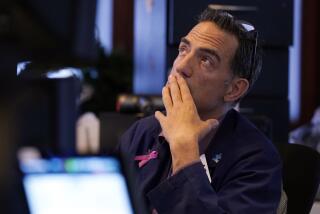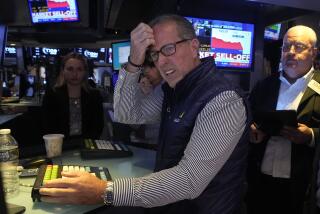Stock Market Crash of 1987
- Share via
Forty-seven years ago in college Economics 101 I was taught that the basis for investing money in companies was their earnings and overall performance records and their prospects for future profits. That basic lesson led to my not being on the victims’ roster of those who took a shellacking in the recent stock market meltdown.
For much of the last five years, the prices of stocks mostly have increased as the result of inflationary forces (an excess of cash and credit) that fueled the market. Company performances became secondary factors. “What a stock should do,” not “what a company expects to earn,” was the basis of many buy recommendations I received.
The market devolved over recent decades into a monumental crap shoot. The small investors wanted in on a good thing and the giant funds managers often were able to cause parts of the market to move up to their benefit. It was an everyone-wins situation.
Perhaps as the result of being a Depression child and the son of banker during the late 1920s and the 1930s, I have been overly conservative in my risk taking. There have been times in recent years when my wife berated my play-it-safe approach to investing. Had the market binge continued much longer I probably would have joined her.
However, as I review my portfolios of insured certificates of deposits, AA-rated municipal bonds and U.S.-backed GNMAs (Government National Mortgage Assn. notes) with an overall 11% annual return and ultimate pay back of every cent invested, I realized that my long-term policy of yielding to the fear and avoiding the greed, the two forces that drive Wall Street, has served me well.
JOHN M. FRETER
Yucca Valley
More to Read
Inside the business of entertainment
The Wide Shot brings you news, analysis and insights on everything from streaming wars to production — and what it all means for the future.
You may occasionally receive promotional content from the Los Angeles Times.










